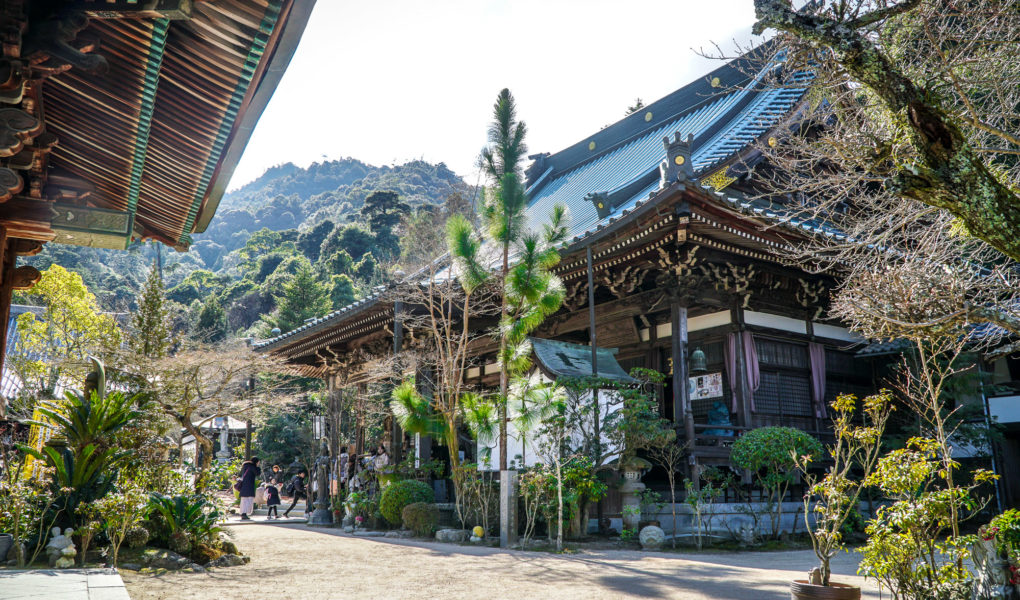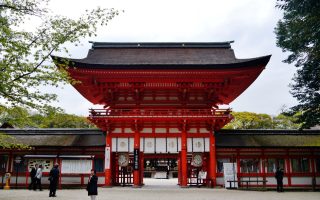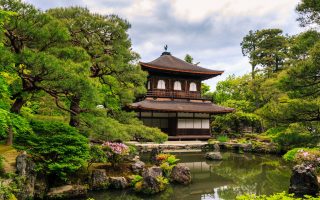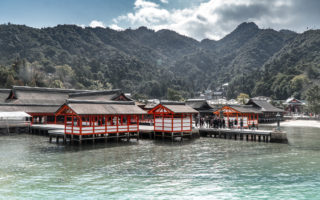Daisho-in (大聖院) temple on Miyajima, in Hiroshima Prefecture, is an important temple in the Shingon Buddhist sect. The temple was founded by Kukai in 806, and is known for it’s beautiful fall foliage and for keeping the same flame burning since the temple was established 1200 years ago (the flame is kept in a building near the peak of Mount Misen).
Miyajima Hotels Hiroshima Hotels Miyajima & Hiroshima Tour Japan Rail Pass
Daisho-in temple, also known under the name Suishō-ji, is scenically located at the foot of Miyajima’s sacred Mount Misen. It is an old temple, dating back to 806. The temple grounds are covered in statues of Kannon, the furious looking Fudō-myōō and the Seven Gods of Fortune.
Before passing through the main gate, you will have the option to visit the tea house which is located right next to the gate.
As you pass through the main gate, and work your way up the many stairs, you are met by an unusually beautiful and peaceful temple area. Daisho-in sees considerably fewer visitors than the famous Itsukushima Shrine which is located a few minutes down the mountain. The temple is therefore able to maintain a much quieter atmosphere on the otherwise busy Miyajima island.
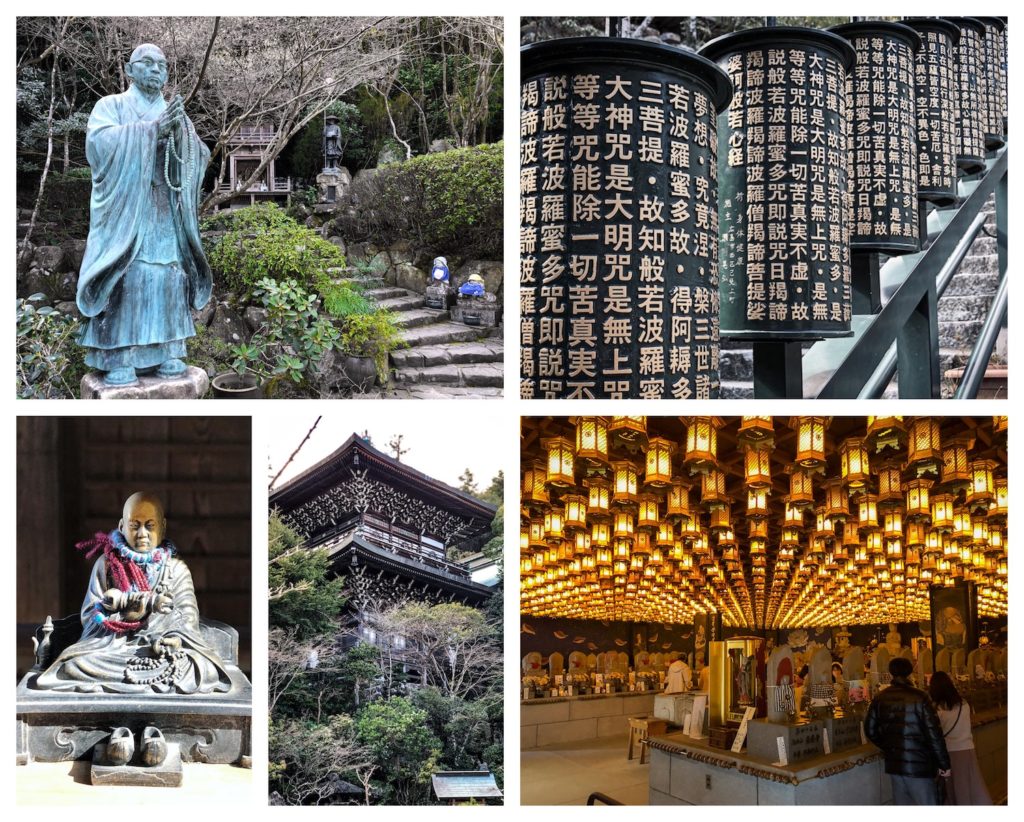
Daisho-in, Miyajima. © touristinjapan.com
Daisho-in consists of a number of large buildings spread out across an area of the mountain side. Some buildings are even located near the top of mount Misen. The Kannon hall on the right side of the entrance is impressive with it’s huge roof and evergreen plants lining it’s perimeter. The Chokugan hall across from the Kannon hall is impressive too, and if you look up you will see the Maniden Hall sitting at an elevation behind the Kannon hall. The Maniden Hall looks different than the rest of the buildings. It is highly decorated with carvings and almost has the appearance of a pagoda. As it majestically sits on the hillside above the other buildings, it creates a mystical atmosphere which draws you towards it. The staircase leading up to Maniden Hall is lined with rolls of sutras. Turning all the sutras with your hands while walking up the stairs is supposed to give you all the same power as reading them, so feel free to give them a spin when you ascend.
At the very back of the temple grounds is the Daishi Hall. In the artificial cave under the hall is a replica of the famous 88 temple pilgrimage of Shikoku. 88 statues are placed along a walking path in the room, representing the 88 stops of the pilgrimage. The room itself is lit by hundreds of traditional, golden lanterns hanging from the ceiling, creating a unique golden light in the room. On top of the cave sits the hall it self. A walk around the hall reveals hundreds of small statues of sitting monks, and behind the hall a large, golden vajra is hidden.
Hiking path
One of the three hiking paths which lead up mount Misen starts just to the left of the bridge which leads to Daisho-in’s main gate. A few hundred meters up along the river there is a nice view over the temple. Even if you aren’t planning to hike up the mountain, it is recommended to hike up 10 minutes and back, just to enjoy the alternative perspective on the area and complex.
History of Daisho-in Temple
There seems to be some general confusion and uncertainty about the origins of Daisho-in, or “Suisei-ji” which was it’s original name. It even seems to be speculated that the temple was not originally located on Miyajima, but archeologic investigations have shown that it likely has been located on Miyajima all the time.
It is said that Kukai, the founder of Shingon Buddhism in Japan, established Daisho-in temple in 806 when he was practicing on Mount Misen. There seems to be no historic evidence to support this claim, so it remains a speculation. Kukai is one of the most important characters in the history of Japanese Shingon Buddhism, and played an important role in Japanese history in general. It is therefore an important claim for the temple, that it was founded by Kukai.
The temple went on become the official prayer hall for Emperor Toba (1103-1156) a few centuries later.
In 1885, few years after the Meiji Restoration, where the imperial rule regained power from the Tokugawa shogunate, and Buddhism and Shinto was forced apart, Emperor Meiji stayed at Daisho-in during his visit to Miyajima. Two years later, in 1887 the temple’s main hall took great damage in a fire, and had to be reconstructed.
The temple again took great damage during a typhoon in 1991, and wasn’t fully restored until 1998. In 2006 the temple celebrated it’s 1200th anniversary, where Dalai Lama came to congratulate.
Getting there
By foot: From Miyajima ferry port it takes around 25 minutes to walk to Daisho-in temple. From Itsukushima Shrine it is a 5-10 minute walk to the temple.
Getting to Miyajima
By ferry: the ferry to Miyajima leaves from Miyajimaguchi port. The ferry takes 10 minutes and costs ¥180. There are two companies operating the route, Matsudai and Japan Rail. If you take the Japan Rail (JR) ferry, then the fare is covered by the Japan Rail Pass.
Train to Miyajimaguchi port: take the JR Sanyo Line from Hiroshima station to Miyajimaguchi station. The ride takes around 30 minutes and the fare is ¥420 (covered by the Japan Rail Pass). Alternatively it’s possible to take tram no.2 from Hiroshima to Miyajimaguchi. The fare is lower at ¥270, but the tram takes around 70 minutes from Hiroshima Station to Miyajimaguchi. From the station, there is a 5 minute walk to the ferry port.
Hiroshima direct ferry: there are direct ferries from Hiroshima to Miyajima. If you have limited time in Hiroshima, this might be the most efficient option. The direct boat leaves from Hiroshima Peace Park (show pier on map), and the ride takes about 45 minutes. The one-way fare is ¥2’200, and a return ticket is ¥4’000. There are 17 daily departures in each direction.

